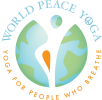Throat Chakra
Located in the throat, vishuddha chakra connects to communication, self-expression, and interactions with others, such as listening, speaking, chanting, singing, writing, and art. When this chakra is in balance, we experience no inhibitions, we do not hesitate to express ourselves, and we are able to do so in a kind and loving way. We know when to speak and when to listen. An open vishuddha chakra liberates us to tune into creativity. It inspires us to communicate through art, social media, poetry, songwriting, and other forms of expression.
This chakra is out of balance when we have trouble speaking out or expressing our thoughts. The phrases, “I’m all choked up,” or “I have a lump in my throat,” relate to this blockage. As a result, we may stumble over our words or say them in a hurtful or critical way. If we feel that others are not interested in listening to us, we may feel disempowered, and find it difficult to listen to them. Some individuals may struggle with “writer’s block,” or a general lack of interest in creative and artistic modes of self-expression.
If you find yourself saying things like, “I can’t sing,” “I’m not very good at speaking in front of others,” or, “It is hard for me to share what I feel,” then your throat chakra may be out of balance. What keeps us from singing, speaking, or creatively communicating our truth? For some of us, it is fear, self-consciousness, or a perception of how our voice comes across to others. Or, perhaps we are responding in an unhealthy way to those who do whatever it takes to get what they want. Sometimes described as “cutthroat,” these people have little (or highly selective) empathy for others. They are often unaware (or dismissive) of the fact their actions have serious consequences. The term, “cutthroat,” derives from the action of cutting a fellow animal’s throat and allowing it to bleed to death, which is a common method of slaughter. In addition, we use the expression, “Shove something down someone’s throat,” as an example of forcing someone to accept or swallow something they do not like. This saying derives from the exploitation of ducks and geese, who are force-fed to create foie gras, which is French for “fatty liver.” Multiple times a day, workers shove a thick metal tube down these birds’ throats and use an air pump to shoot two pounds of food into their bodies…all so that people may feast on their enlarged and diseased livers.
Humans take away the voices and lives of millions of beings for food, clothing, and other unnecessary purposes. These are just a few examples of how and where imbalances in the throat chakra originate. It is not possible to liberate our voices when we (directly or indirectly) steal the voices of others.
Balancing the throat chakra assists with creating healthy boundaries for our voices and our speech. For example, speaking out on behalf of beings that do not have an effective way to talk with humans is quite different than speaking on behalf of those who do. Speaking for others—when they haven’t requested it— is not an authentic form of communication. It is co-dependent, dysfunctional behavior, and it does not honor healthy boundaries. Speaking authentically, with healthy boundaries, means either speaking from personal experience, or honoring someone else’s request to speak in their place. When we speak up on behalf of other beings—or for members of marginalized communities, as another example—we do it to uplift and provide them with an opportunity to be heard.
When sharing your unique voice, it is also important to mindfully choose your words and be aware of hidden (or not-so-hidden) discrepancies. We often use violent language to describe a variety of things. “Kill two birds with one stone,” “Running around like a chicken with its head cut off,” “Milk it for all it’s worth,” and “Take a stab at it,” are just a few examples of destructive sayings. In addition to using violent language as a method of communication, humans rarely speak up—or act out against—the other daily atrocities that occur in our world.
What do we say or do about them?
We may start by ceasing our participation in violence toward others. When we choose to practice an ahimsic lifestyle, we liberate other beings and empower their voices. Other techniques that assist in balancing this chakra include practicing shoulderstand, breathing consciously, performing voice exercises, and focusing on the intentional release of fear, self-criticism, and self-consciousness.
“Let me clear my throat!” We clear our throats to get people’s attention or when stating something we feel is important. This is a clearing out of “stuff,” be it fear or self-consciousness, so that we may speak our individual truths. Our voices express our vital life force energy and have the potential to communicate artistically and create uplifting sound vibrations.
When speaking, singing, or writing from a place of truth, love, and vulnerability, we may purely express this prana, or life force energy. People with liberated voices may speak out on behalf of marginalized individuals whose voices are ignored or denied. When we use them compassionately—from the heart and without inhibition—our voices are powerful tools that create peace on this planet.
Please watch and practice to the video below on the throat chakra.
